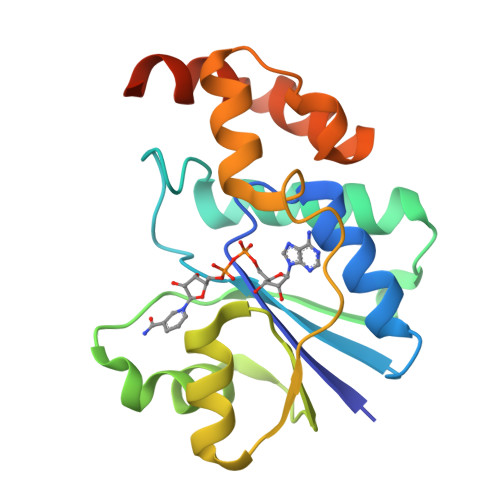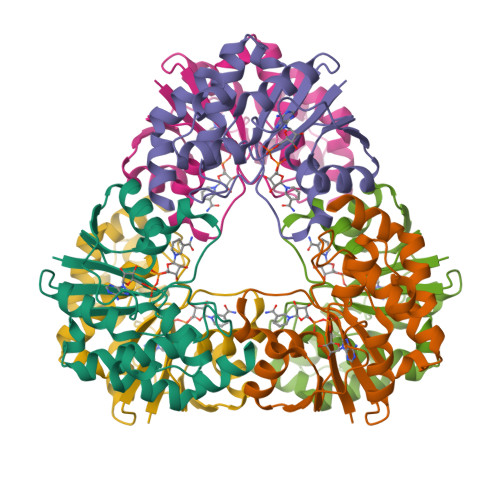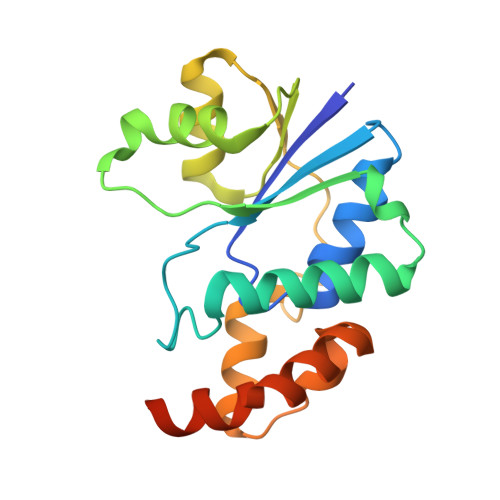Mutational, Structural, and Kinetic Studies of the ATP-binding Site of Methanobacterium thermoautotrophicum Nicotinamide Mononucleotide Adenylyltransferase
Saridakis, V., Pai, E.F.(2003) J Biological Chem 278: 34356-34363
- PubMed: 12810729
- DOI: https://doi.org/10.1074/jbc.M205369200
- Primary Citation of Related Structures:
1M8F, 1M8G, 1M8J, 1M8K - PubMed Abstract:
Several residues lining the ATP-binding site of Methanobacterium thermoautotrophicum nicotinamide mononucleotide adenylyltransferase (NMNATase) were mutated in an effort to better characterize their roles in substrate binding and catalysis. Residues selected were Arg-11 and Arg-136, both of which had previously been implicated as substrate binding residues, as well as His-16 and His-19, part of the HXGH active site motif and postulated to be of importance in catalysis. Kinetic studies revealed that both Arg-11 and Arg-136 contributed to the binding of the substrate, ATP. When these amino acids were replaced by lysines, the apparent Km values of the respective mutants for ATP decreased by factors of 1.3 and 2.9 and by factors of 1.9 and 8.8 when the same residues were changed to alanines. All four Arg mutants displayed unaltered Km values for NMN. The apparent kcat values of the R11K and R136K mutants were the same as those of WT NMNATase but the apparent kcat values of the alanine mutants had decreased. Crystal structures of the Arg mutants revealed NAD+ and SO42- molecules trapped at their active sites. The binding interactions of NAD+ were unchanged but the binding of SO42- was altered in these mutants compared with wild type. The alanine mutants at positions His-16 and His-19 retained approximately 6 and 1.3%, respectively, of WT NMNATase activity indicating that His-19 is a key catalytic group. Surprisingly, this H19A mutant displayed a novel and distinct mode of NAD+ binding when co-crystallized in the presence of NAD+ and SO42-.
Organizational Affiliation:
Molecular and Structural Biology, Ontario Cancer Institute, University Health Network, and the Department of Medical Biophysics, University of Toronto, Ontario, Canada.



















